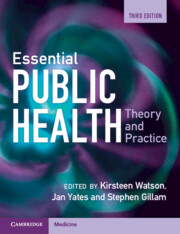Part 1 - The Public Health Toolkit
Published online by Cambridge University Press: 01 December 2023
Summary

- Type
- Chapter
- Information
- Essential Public HealthTheory and Practice, pp. 11 - 202Publisher: Cambridge University PressPrint publication year: 2023

